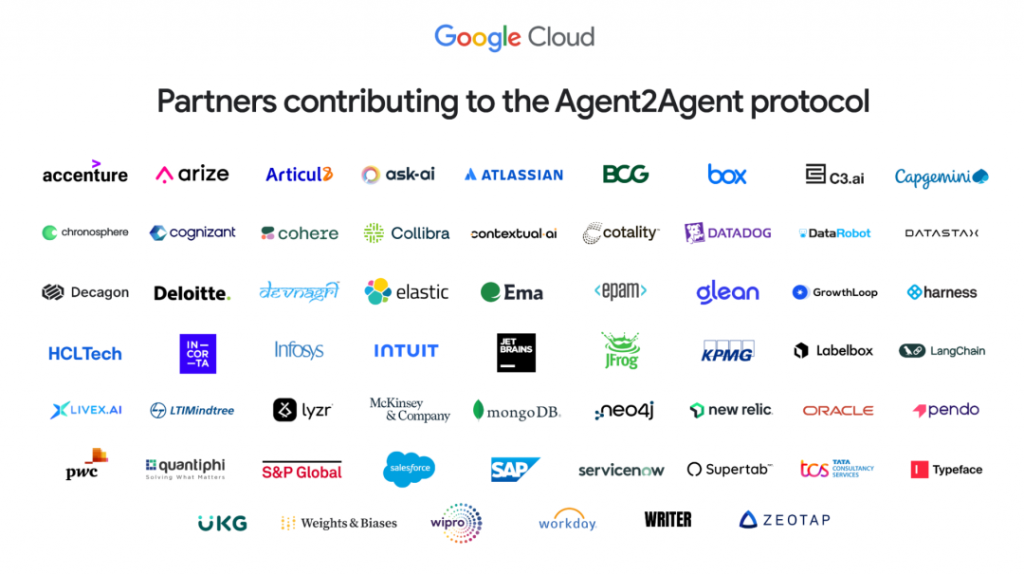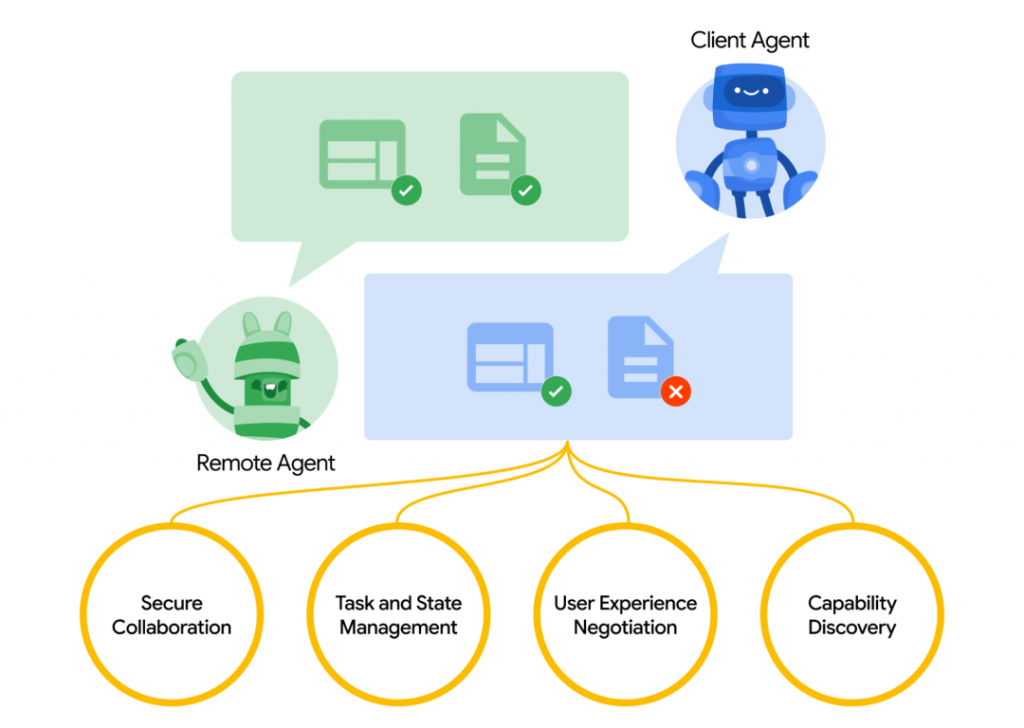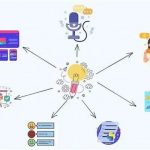
In today’s rapidly evolving digital age, AI agents have become powerful tools for boosting productivity and optimizing business processes. They can autonomously handle a wide range of repetitive daily tasks or complex workflows, from simple equipment procurement to intricate supply chain planning and customer support services. The use cases for AI agents are virtually limitless. However, as businesses increasingly rely on AI agents, a new challenge has emerged: How can these AI agents, developed by different vendors and built on various frameworks, seamlessly collaborate to maximize their productivity? Today, we’ll explore a groundbreaking solution — the Agent2Agent (A2A) protocol, which promises to usher in a new era of intelligent agent collaboration.
I. The Collaboration Challenges and New Opportunities for AI Agents
In enterprise environments, AI agents are becoming more widely adopted. They help automate processes, improve efficiency, and reduce costs. However, most AI agents currently operate independently, lacking effective mechanisms for collaboration. It’s like having a large orchestra where each musician plays their part without coordination, failing to create a harmonious symphony. Similarly, if AI agents cannot collaborate effectively, their full potential remains untapped.
To address this issue, Google has partnered with over 50 technology collaborators and service providers, including Atlassian, Box, Cohere, Intuit, Langchain, MongoDB, PayPal, Salesforce, SAP, ServiceNow, UKG, Workday, and leading service providers such as Accenture, BCG, Capgemini, Cognizant, Deloitte, HCLTech, Infosys, KPMG, McKinsey, PwC, TCS, and Wipro. Together, they’ve launched the Agent2Agent (A2A) open protocol. This protocol enables AI agents from different sources to securely exchange information and coordinate actions across various enterprise platforms and applications, achieving seamless cross-system collaboration.

II. The A2A Protocol: Opening a New Chapter in Intelligent Agent Collaboration
The introduction of the A2A protocol marks the dawn of a new era in intelligent agent collaboration. It represents not only a technological breakthrough but also a significant push toward digital transformation for enterprises. Through A2A, AI agents can transcend different data systems and applications, achieving true interoperability. Think of it as building a bridge for AI agents, allowing them to move freely between “islands” and work together to complete complex tasks.
The core advantage of the A2A protocol lies in its openness and compatibility. As an open protocol, any developer can build AI agents based on it that can interact with other agents. Additionally, it complements Anthropic’s Model Context Protocol (MCP), providing useful tools and contextual information for agents. Furthermore, A2A draws on Google’s internal expertise in scaling large-scale agent systems, aiming to address challenges identified during the deployment of large-scale, multi-agent systems for customers.
III. Design Philosophy and Five Core Principles of the A2A Protocol
The design of the A2A protocol adheres to five core principles, ensuring its flexibility, security, compatibility, and practicality:
- Embracing Agent Capabilities: A2A focuses on enabling agents to collaborate in their natural, unstructured modes, even when they don’t share memory, tools, or context. This allows agents to truly function in multi-agent scenarios without restrictions.
- Built on Existing Standards: The protocol is based on popular, existing standards like HTTP, SSE, and JSON-RPC, making it easier to integrate with existing IT systems commonly used in enterprises.
- Secure by Default: A2A supports enterprise-grade authentication and authorization, aligning with OpenAPI authentication schemes at launch.
- Support for Long-Term Tasks: A2A is designed to be flexible, supporting scenarios ranging from quick tasks to long-term projects that may take hours or even days. During this process, A2A provides real-time feedback, notifications, and status updates to users.
- Modality-Agnostic: The world of agents isn’t limited to text, so A2A is designed to support various modalities, including audio and video streams.
IV. How the A2A Protocol Works

The A2A protocol facilitates communication between “client” agents and “remote” agents to achieve its functionality. Client agents are responsible for formulating and communicating tasks, while remote agents execute these tasks to provide accurate information or take appropriate actions. This interaction involves several key capabilities:
- Capability Discovery: Agents can advertise their capabilities using a JSON-formatted “agent card,” enabling client agents to identify the best-suited agent for a task and communicate with remote agents via A2A.
- Task Management: Communication between client and remote agents is task-oriented, with agents working together to meet end-user needs. The protocol defines a “task” object and its lifecycle. Tasks can be completed immediately or, for long-term tasks, agents can communicate to stay synchronized on the latest status. Task outputs are referred to as “artifacts.”
- Collaboration: Agents can send messages to one another to convey context, responses, artifacts, or user instructions.
- User Experience Negotiation: Each message contains “parts,” which are complete, well-formed content fragments, such as generated images. Each part has a specified content type, allowing client and remote agents to negotiate the correct format and include explicit negotiations for UI capabilities, such as iframes, videos, web forms, etc.
V. Real-World Use Case of the A2A Protocol: Optimizing Recruitment Processes
Let’s illustrate the power of the A2A protocol through a practical example. Imagine a company needs to hire a software engineer. Traditional recruitment processes are often cumbersome and time-consuming. However, under the A2A collaboration framework, everything becomes simple and efficient.
In a unified interface like Agentspace, a user (e.g., a hiring manager) can assign their agent to find candidates matching the job description, location, and skill requirements. The agent then interacts with specialized agents to identify potential candidates. After receiving these recommendations, the user can instruct their agent to schedule further interviews, streamlining the candidate screening process. Once interviews are completed, another agent can be activated to assist with background checks.
This example vividly demonstrates how AI agents can collaborate across systems to identify qualified candidates.
VI. Looking Ahead: The Potential and Future Development of the A2A Protocol
The introduction of the A2A protocol is not just a technological innovation; it’s a significant step forward in driving enterprise digital transformation. It has the potential to usher in a new era of intelligent agent collaboration, sparking innovation and creating more powerful, flexible AI systems. We believe this protocol will pave the way for seamless agent collaboration, solving complex problems and improving our quality of life.
Google is committed to collaborating with partners and the community to develop this protocol. They’ve released it as an open-source project with clear contribution pathways. A full draft specification of the protocol is already available, along with code examples and sample scenarios on the A2A website. Additionally, Google is working with partners to release a production-ready version of the protocol later this year.
VII. Conclusion: Embrace A2A and Welcome the Future of Intelligent Collaboration
With the launch of the A2A protocol, we stand on the threshold of a new era. This protocol not only addresses current challenges in AI agent collaboration but also offers boundless possibilities for future enterprise digital transformation and intelligent development. It gives us a glimpse into a future where AI agents can collaborate seamlessly to complete complex tasks, bringing higher efficiency and innovation to businesses.
Let’s look forward to the official release of the A2A protocol and welcome the future of intelligent collaboration together!
Reproduction without permission is prohibited:AI LAB » Google just introduced Agent2Agent (A2A): a brand-new open protocol that lets AI agents collaborate securely within an ecosystem. This game-changing innovation could completely transform how AI systems interact, paving the way for smarter and more efficient cooperation in the future!





